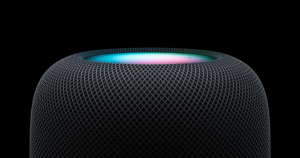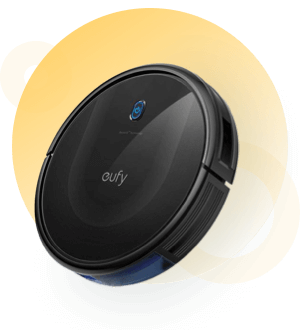Smart home assistance is becoming increasingly popular as it provides convenience and control for homeowners. With the variety of options available, consumers are presented with a challenge when it comes to finding the best smart home assistant that fits their needs.
We have done extensive research to provide readers with an in-depth evaluation of the most popular choices on the market today. In this article, we will look at each model’s features, advantages, and disadvantages so you can make an informed decision about which one is right for you.
| Device | Price – approx. (USD) | Compatibility | Accuracy (Questions Answered Correctly) | Understood Query | Smart Home App Compatibility |
|---|---|---|---|---|---|
| Alexa | $40-$250 | IOS & Android (through apps) | 79.80% | 99.90% | Most compatible with smart home devices from various companies |
| Google Assistant | $35-$230 | IOS & Android (through apps) | 92.90% | 100% | Compatible with most smart home devices |
| Siri (HomePod) | $99-$299 | IOS (Apple devices) | 83.10% | 99.80% | Only compatible with IOS (Apple Devices) |

Pros and Cons: Amazon Alexa
Pros
- Wide Range of Skills and Integrations: Alexa boasts an extensive library of skills, which are third-party apps that extend its capabilities. These skills allow you to perform a variety of tasks, from ordering food and requesting rides to controlling smart home devices and playing games. Additionally, Alexa integrates seamlessly with numerous smart home devices and services, providing a comprehensive and interconnected user experience.
- Excellent Voice Recognition and Natural Language Processing: Alexa’s voice recognition technology is highly accurate, even in noisy environments. It excels at understanding natural language commands, making interactions with the assistant feel intuitive and effortless.
- Vast Music and Entertainment Options: Amazon Alexa offers access to a vast library of music streaming services, including Amazon Music, Spotify, and Pandora, allowing you to enjoy your favorite tunes with simple voice commands. It also supports a wide range of entertainment options, such as audiobooks, podcasts, and radio stations.
- Alexa-compatible Hardware Ecosystem: Amazon has built a robust ecosystem of Alexa-compatible devices, including Echo smart speakers, smart displays, and even third-party devices. This hardware ecosystem provides flexibility in choosing the device that best fits your needs and seamlessly integrates with Alexa.
Cons
- Privacy and Data Concerns: Alexa’s always-listening feature raises privacy concerns for some users. While Amazon has implemented privacy features like mute buttons and voice recordings deletion options, there have been reports of accidental activations and instances where recordings were mistakenly sent to third parties.
- Limited Customization: Compared to some competitors, Alexa offers relatively limited customization options. Users have less control over the voice assistant’s voice and appearance, which might be a drawback for those seeking a more personalized experience.
- Lack of Multilingual Support: Alexa’s multilingual capabilities are still somewhat limited, which can be a downside for users who primarily speak languages other than English. While it supports multiple languages, the breadth of features and skills might be more limited for non-English speakers.
- Variable Skill Quality: Although Alexa has a vast library of skills, the quality can vary significantly. Some skills may have limited functionality or lack updates, resulting in a less satisfying user experience.

Pros and Cons: Google Assistant
Pros
- Superior Knowledge Graph and Search Integration: Google Assistant leverages Google’s vast knowledge graph and search capabilities, providing accurate and comprehensive answers to a wide range of questions. It excels at retrieving information, making it an excellent tool for general knowledge queries.
- Natural Language Processing and Contextual Understanding: Google Assistant is known for its exceptional natural language processing abilities. It can understand complex queries and follow-up questions, providing a conversational and intuitive user experience. It also excels at context-aware responses, seamlessly integrating information from previous interactions.
- Seamless Integration with Google Services: Google Assistant seamlessly integrates with various Google services, such as Google Calendar, Google Maps, and Gmail. This integration allows for streamlined access to personal information, reminders, and location-based services, enhancing productivity and convenience.
- Cross-Platform Availability: Google Assistant is available across a wide range of devices, including smartphones, tablets, smart speakers, smart displays, and smart TVs. This cross-platform availability ensures a consistent and cohesive experience across multiple devices within the Google ecosystem.
Cons
- Limited Smart Home Device Compatibility: While Google Assistant supports a significant number of smart home devices, its compatibility with certain devices or ecosystems may be more limited compared to competitors like Amazon Alexa. It’s crucial to verify compatibility before purchasing smart devices to ensure they work seamlessly with Google Assistant.
- Privacy Concerns: Like other voice assistants, Google Assistant raises privacy concerns due to its always-listening nature. Users may be cautious about the potential recording and storage of their voice commands and interactions. Google has implemented privacy features like the ability to review and delete voice recordings, but concerns remain.
- Less Third-Party Skills Compared to Competitors: Although Google Assistant has a growing library of third-party actions (skills), it still lags behind competitors in terms of quantity and diversity. Some users may find that certain specialized skills or services they desire are not available on the platform.
- Voice Recognition Challenges: While Google Assistant has made significant improvements in voice recognition, it may still occasionally struggle with understanding accents, dialects, or speech impairments. Users with unique speech patterns may experience occasional frustration with accuracy.

Pros and Cons: Siri
Pros
- Deep Integration with Apple Ecosystem: Siri and HomePod offer seamless integration with the Apple ecosystem, including other Apple devices like iPhones, iPads, and Macs. This integration allows for easy control of smart home devices, access to personal information, and syncing across devices, providing a unified user experience.
- Enhanced Privacy and Security: Apple has a strong reputation for prioritizing user privacy and security. Siri’s voice recognition and processing occur locally on the device, minimizing the potential for data breaches or unauthorized access. Apple also implements robust privacy measures and gives users control over their data.
- High-Quality Sound and Music Experience: HomePod is known for its impressive audio quality. It delivers excellent sound performance, making it a popular choice for music enthusiasts. Siri’s integration with Apple Music allows for seamless voice control and music playback, providing a convenient and immersive listening experience.
- Natural Language Understanding and Contextual Responses: Siri has made significant strides in natural language understanding and contextual responses. It can comprehend complex queries and follow-up questions, providing a conversational and intuitive user experience. Siri’s integration with other Apple services also enhances its ability to provide personalized responses.
Cons
- Limited Smart Home Device Compatibility: Compared to some competitors, HomePod’s compatibility with third-party smart home devices and ecosystems can be more limited. It may not work seamlessly with all devices, requiring additional steps or workarounds to integrate them effectively.
- Lack of Customization Options: Siri and HomePod offer limited customization options compared to some other smart home assistants. Users have less control over the voice assistant’s voice, appearance, and personalized settings, which may be a drawback for those seeking a highly tailored experience.
- Reliance on Apple Ecosystem: While Siri and HomePod excel within the Apple ecosystem, their functionality may be more limited when interacting with non-Apple devices or services. Users heavily invested in other ecosystems may find compatibility challenges or missing features.
- Variable Accuracy and Reliability: While Siri has improved over the years, it may still occasionally face challenges in accurately understanding voice commands, especially in noisy environments or with accents and dialects. Some users may experience occasional frustrations with reliability or misinterpretation of queries.















